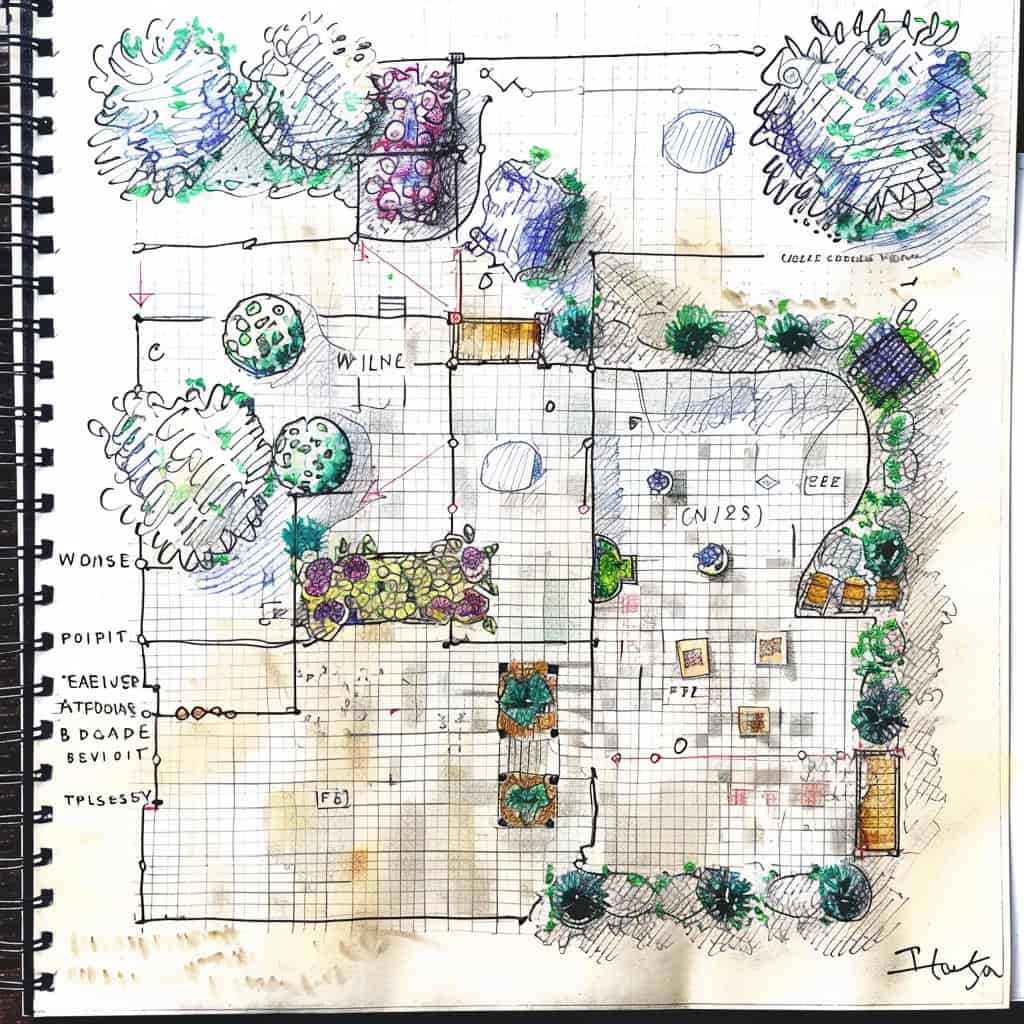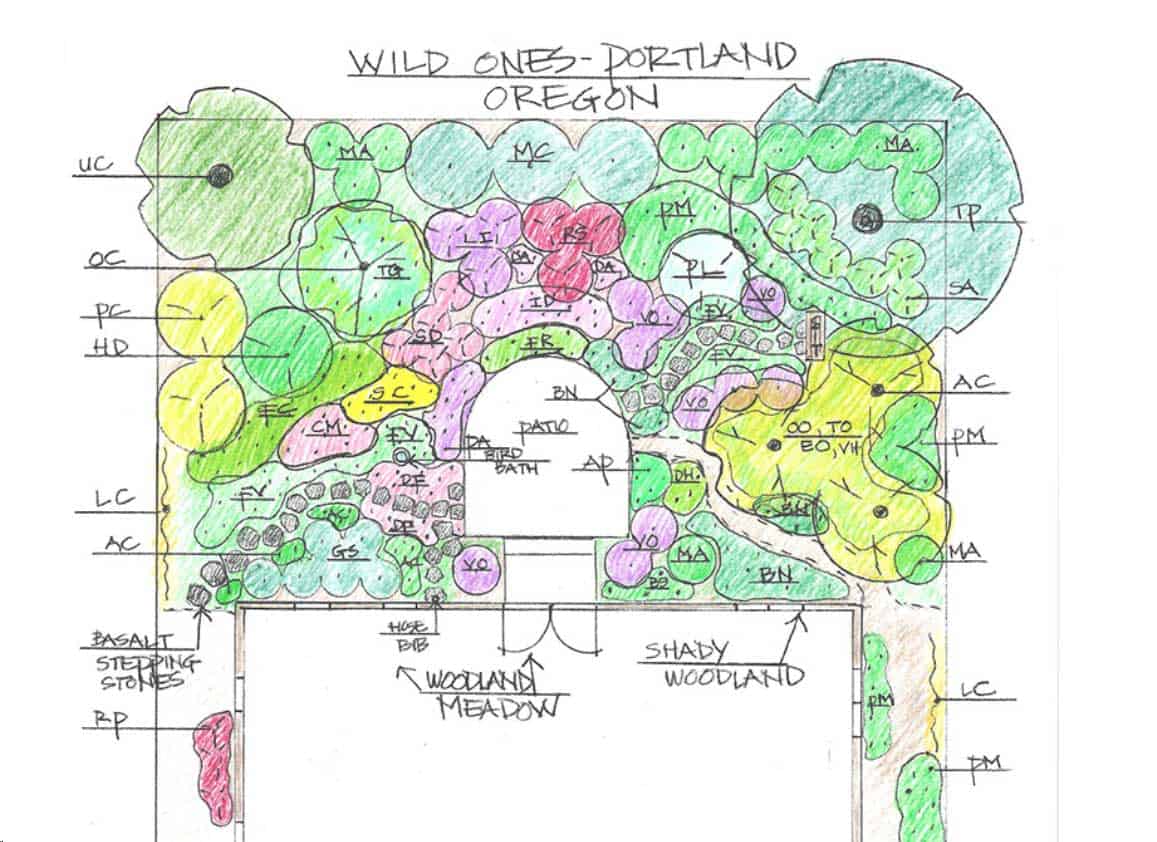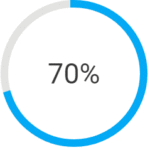Ideas You Can Use Today
Is garden design on your mind these days? Looking for quick ideas to lay out a new garden space? Whether you’re starting from scratch or improving an existing part of your yard, we’ve got some suggestions for ready-made resources that will help you visualize your space and begin a list.

Reminders: Before You Start
Don’t forget to put a little thought into your goals and what might be the best fit for your space. Here are a few simple suggestions:
- Observe sunlight intensity and existing moisture or irrigation patterns to determine the best spots for plants. Every plant has preferences, and some are more tolerant than others.
- Define your garden design goals based on who will use the space and the functions you want it to serve, like attracting pollinators or birds, or lowering your water bill.
- Put a little thought into plant density and and style. Do you plan to follow the principles of “green mulch” where plants do the work of crowding out competitors, or do you plant to use mulch? Do you plan to use container plants or plugs only, or will you include seeds in the mix? Think about existing plants and how much and how fast old and new plants will grow.
- Create an initial rough sketch that shows a basic to-scale idea of what types of plants you might include and where they’ll be placed. No need to get fancy, because when you create your plant list it will also help inspire your choices about placement.
Using Tools to Create an Initial Sketch
Now that the goals are established, it’s time to transform those dreams into an actionable plan. Here are the steps to create your garden layout:
- Grab some graph paper or open up a digital tool.
- Sketch the borders of your garden space.
- Within the borders, draw the embryonic shapes of flower beds, seating areas, and winding paths.
- Remember that a path should be wide enough to stroll comfortably, at least 18 inches, inviting exploration and discovery.
The initial sketch need not be perfect, but it should encapsulate your vision.
There’s also the option of using a free online presentation tool like Canva to help with your garden designs. These types of digital tools can be surprisingly adept at helping create more professional-looking plans, with pre-built shapes that allow you to play with different plant placements until they feel just right.
If you’re a stickler for accuracy, superimposing your sketch over an aerial photo can ensure that your garden beds are as meticulously placed as a painter’s brushstrokes.

Anyway, On to the Good Stuff
Wild Ones Garden Design Templates
One excellent starting source of inspiration for gardeners of any skill level is the Wild Ones Native Garden Designs page, where you can find templates created by professional designers, organized by location.
Here are the plans Wild Ones currently features:
- Boston, MA
- Chattanooga, TN
- Chicago, IL
- Columbia River Basin, WA
- Denver/Front Range, CO
- Grand Rapids, MI
- Greensboro, NC
- Lafayette, LA
- Las Cruces, NM
- Milwaukee, WI
- Minneapolis, MN
- Philadelphia, PA
- Portland, OR
- Princeton, NJ
- St. Louis, MO
- Tallahassee, FL
- Toledo, OH
- Tucson, AZ
- Washington, DC
There are several reasons why these templates are good starting points: they are created by professionals with regional experience, they use mostly native plants, and they demonstrate the wide variety of ways you can go about visualizing an outdoors space. Most have a variety of features, including paths and hardscapes, and all of them are built around houses and consider things like front- vs. backyard roles. You’ll learn a lot by reading the designer notes that accompany most them, and you can download them all as PDF files.
Nursery Plant Selections and Guides
Our second recommendation is to go to the websites of reputable native plant nurseries like Prairie Nursery, Prairie Moon Nursery, and many other who offer suggestions for designing spaces with native plants.
Books and Websites
The number of good books on ecologically friendly gardening and landscape design grows each year, but here are some of our favorites:
- New Naturalism: Designing and Planting a Resilient, Ecologically Vibrant Home Garden (Kelly D. Norris, 2021)
- The Living Landscape: Designing for Beauty and Biodiversity in the Home Garden (Rick Darke and Douglas Tallamy, 2014)
- Planting in a Post-Wild World: Designing Plant Communities for Resilient Landscapes (Thomas Rainer and Claudia West, 2015)
- New Wild Garden: Natural-style planting and practicalities (Ian Hodgson, 2021)
In the online space, reliable sources of garden design tips and suggestions can come from organizations like Wild Ones and state native plant societies, or you can dive into the bottomless well of videos and reels that seem to grow exponentially in number each season on YouTube, Instagram and TikTok. Even brands that hardly ever paid attention to native plants before are getting into the groove. Better Homes and Gardens, long a source of traditional gardening advice, has a fairly recent section that features “Nature Lovers’ Gardening” ideas, including an article by Benjamin Vogt, a well-known advocate of wild and native landscapes.
On his own website Vogt provides visual inspiration in the form of a large gallery of actual plantings that are mostly specific to the central U.S. but provide plenty of ideas for how to incorporate “matrix gardening” concepts into your plans. Vogt is also the author of a few very popular books on native garden design, including Prairie Up: An Introduction to Natural Garden Design and A New Garden Ethic: Cultivating Defiant Compassion for an Uncertain Future, both excellent reads.
Though most of it focuses on traditional horticultural trends, GardenDesign.com also has lots of content devoted to getting started in landscape design. For example, their page on water-wise gardening provides a showcase of many xeric gardens in a variety of settings.
Other Sources of Inspiration
But how to start amidst all these choices? Consider local sources as one of the best alternatives. Local plant knowledge can come from anywhere, including:
- public gardens, with their curated collections and expertly designed landscapes
- your county or university extension office to see if they offer any classes or know of local native plant sales
- your local native plant society or garden club to connect with other native plant enthusiasts and get tips specific to your area
- local botanical gardens and arboretums to see mature examples of native plant gardens and get design inspiration
Each source is a potential gold mine of ideas waiting to spark your imagination and fuel your garden design. Botanic and public gardens, in particular, offer a real-world glimpse into what’s possible in your own backyard.
Inspiration can strike in the most unexpected places. A stone path in a historical park might catch your eye, or the way light filters through a pergola in a neighbor’s yard could give you the perfect idea for that sunny corner of your garden. Embrace these moments of discovery and let them guide you toward a garden that’s as unique as you are.
As the structure of your garden takes shape, you can begin to layer in the details that make it truly yours. Planting beds, pathways, and ornamental features will all find their place in time. By phasing your project, you not only manage resources better but also allow yourself the pleasure of watching your garden evolve, step by step, into a living work of art.
Getting started with native plant gardening can feel overwhelming, but you’ll be amazed at how your garden grows and changes over the years. The birds, butterflies, and other wildlife it attracts will make all the effort worthwhile.
Header Image: “Isabelle Greene Garden Design” by brewbooks is licensed under CC BY-SA 2.0.
